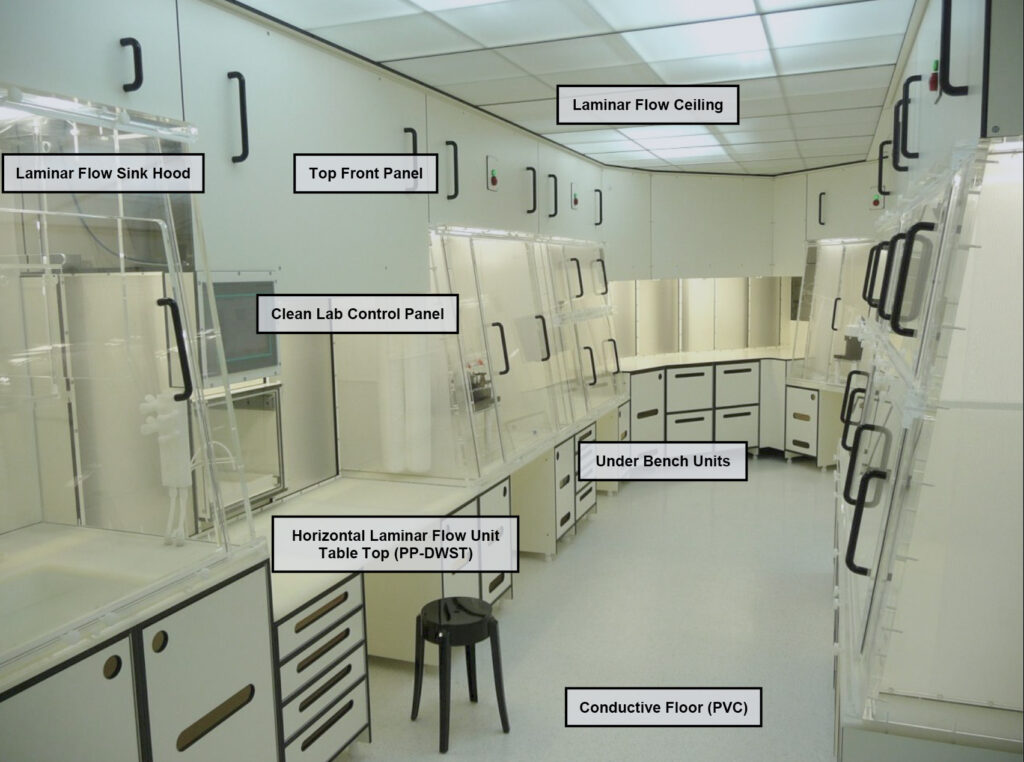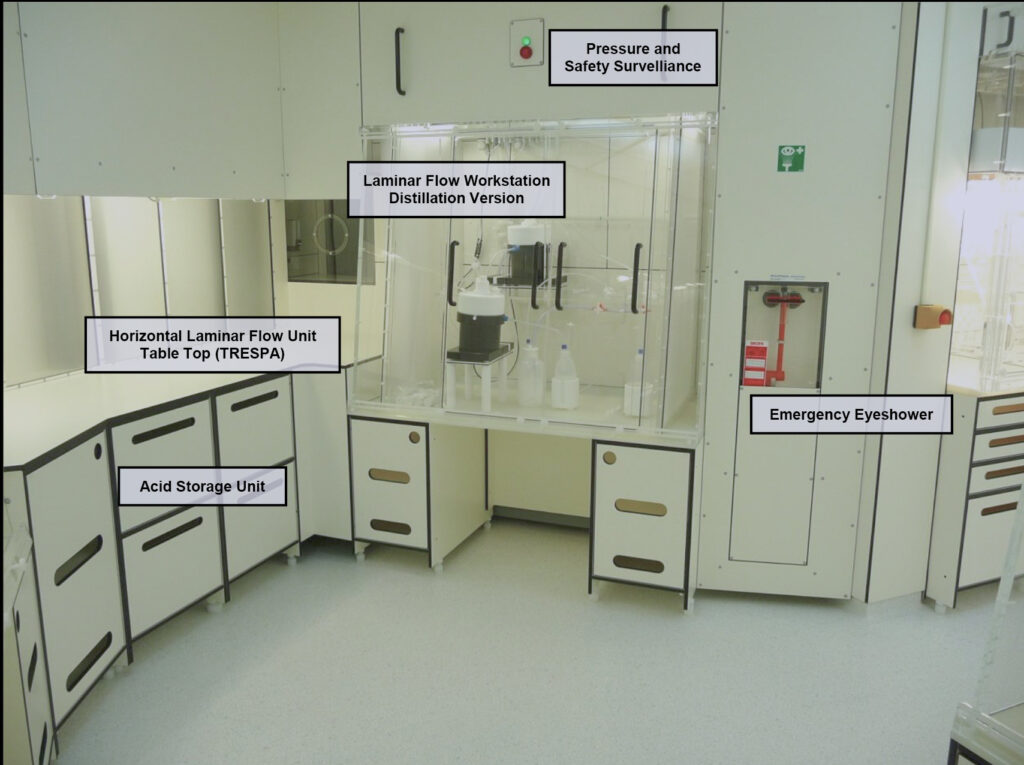PT-Line
The General Clean Room Concept
Your clean room project is related to the most sensitive analytical methods available in Geochemical and Environmental Ultra Trace Element and Isotope Analysis. With ultimate consequence this requires high quality metal free clean rooms, to prevent contamination during sample preparation by particulate matter, including those generated by corrosion in the lab itself. Contamination by molecular contaminants is an even more sophisticated problem that needs attention.
Usually metal free clean rooms follow a concept, providing class 10.000 (US Fed. Std. 209 D (1988)) inside the room, and class 100 inside workstations. This is the standard since 30 years. Within these 30 years the sensitivity of mass spectrometers used in Earth, Environmental, and Material Sciences has increased by three to four orders of magnitude.
The PT Clean Room System is developed to reduce this gap. The whole working zone of the clean lab (workstations and table tops) will achieve much better class 1 and the room will be close to class 10.
Special interest is paid on energy efficiency. The energy savings result from the sophisticated air flow concept. This concept needs considerable less air but provides much more class 1 working space as usual. To get this result, all components of our clean rooms are designed and adjusted to optimize air flow conditions. Consequently without laminar flow ceiling or without PT – Line under bench units, which are integrated parts of the air flow concept, neither the high clean room quality nor the energy efficiency will be achieved.
The unavoidable use of high concentrated acids forces special clean room strategies for sample digestion, distillation of acids, evaporation of acidic fluids, column work, etc. These procedures have to be structurally integrated into clean air laminar flow fume hoods.
Sample preparation for Ultra Trace Element and Isotope Analysis is characterized by long lasting preparation processes. They usually run unattended for hours and days. Consequently a high safety standard is necessary for all methodically related units.
It is imperative that preparation equipment and clean room equipment combine to a professional solution. The scientific background of this solution has to be obvious. Here you will find some distinct descriptions of those elements needed to compose a clean room following the principles of well controlled air flow, ultimate safety, ultimate energy efficiency and maximum clean room quality.
The enclosed pictures show some of the general elements:
- The clean room provides smooth surfaces, suppressing turbulences.
- The air inlet system prevents draft and connected noise, but creates a homogeneous air flow in the traffic zone of the lab.
- The air extraction supports unidirectional flow in the labs and in the workstations.
- The under bench units are integrated into the air flow, preventing particle and molecular enrichment of contaminants in the storage space.
- The arrangement of traffic zones, service zones and workspace allows establishing highest quality working environment with moderate clean air consumption.
- All closed working volumes are horizontal laminar clean air flow workstations or active workstations with alternatively horizontal or vertical air flow of ultimate quality and versatility.
- The lighting concept is perfect.
- All electrical and electronic control and safety components are concentrated in a Clean Lab Power Supply and Control System (CLPS+CS), isolated from the labs atmosphere, including safety and alarm systems. Programmable Logic Controller (PLC) systems allow for remote control and remote service of the clean room site.
- The Lab is strictly metal free.
- Technical equipment, e.g. water purification, cooling systems, power converting and stabilisation, emergency power units etc. are installed in a nearby clean control center to avoid heat, noise and contamination.
- The air conditioning and filtering system follows a high quality energy saving concept. PT – Line developed individual components like filter tables, filter stations and filter banks to provide metal free ultra clean air path. Thus, the system is unique but can be adapted to all existing air handling systems.
- The design features follow ergonomic needs.
- They also guarantee constant high level clean room quality (as built; measured at 0.3 µm particle size).
• Traffic Zone:
a. ISO 14644-1 (1999): class 4 to 3
b. US Fed. Std. 209 E (1992): class M 2,5 to M 1,5
c. US Fed. Std. 209 D (1988): class 10 to 1
• Working Zone (Table Tops; HLFWST and Active Workstations):
a. ISO 14644-1 (1999): class 2 to 1
b. US Fed. Std. 209 E (1992): class M 1
c. US Fed. Std. 209 D (1988): << class 1

